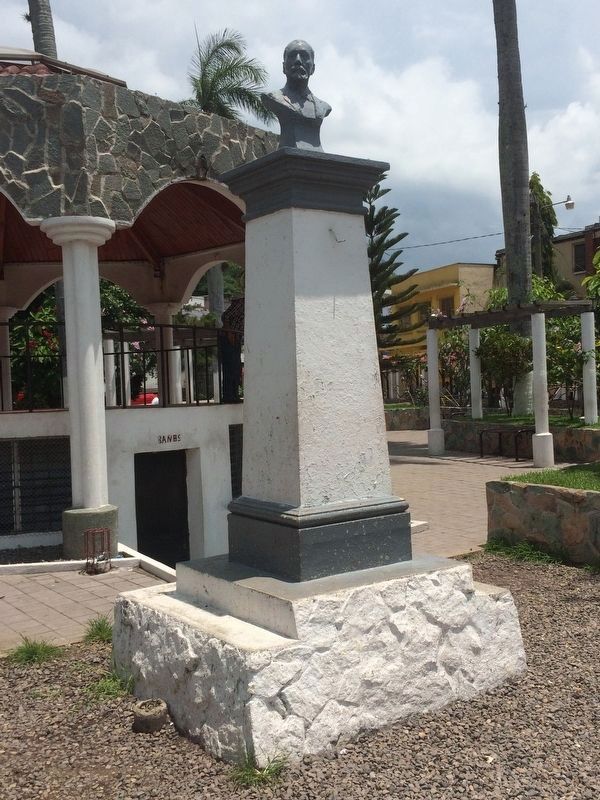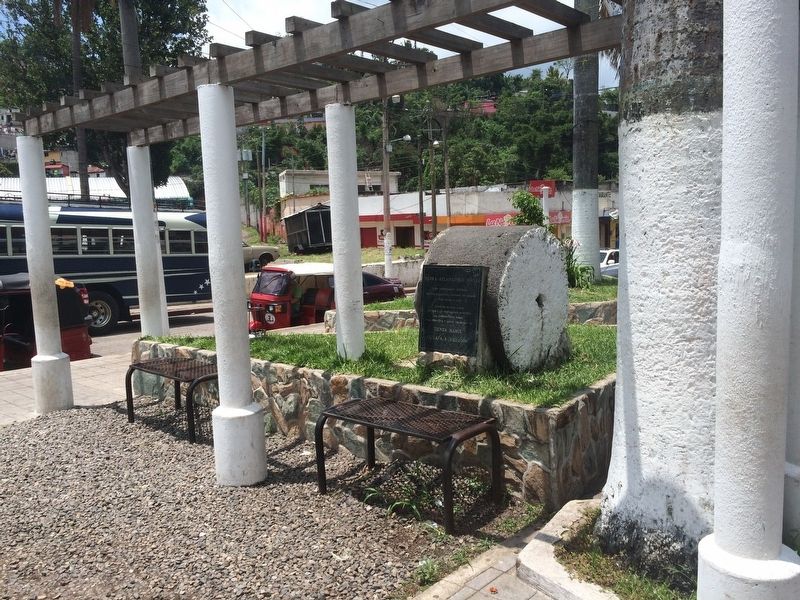Cuilapa, Santa Rosa, Guatemala — Central America
Mayan Compacting Stone
Pieza arqueologica utilizada
por los Mayas para aplanar sus calles.
Peso aprox. 2 ton.
Colocada en este lugar
gracias a la Corporacion Municipal
La Constructora Gómez
y la iniciativa y apoyo financiero de
Tienda Manix
Cuilapa, 8/VII/2004
Archaeological piece used by the Maya to compact their streets.
Approximate weight 2 tons.
Placed here by the Municipality
Gómez Construction
and the initiative and financial support of
Manix Stores
Cuilapa, July 8, 2004
Erected 2004 by Municipalidad of Cuilapa.
Topics. This historical marker is listed in these topic lists: Anthropology & Archaeology • Roads & Vehicles. A significant historical date for this entry is July 8, 2004.
Location. 14° 16.535′ N, 90° 17.929′ W. Marker is in Cuilapa, Santa Rosa. Marker is on 2da Avenida, on the left when traveling south. The marker and stone are in the small central park of Cuilapa, Santa Rosa. Touch for map. Marker is in this post office area: Cuilapa, Santa Rosa 06001, Guatemala. Touch for directions.
Other nearby markers. At least 2 other markers are within 5 kilometers of this marker, measured as the crow flies. First Ordination of a Priest in Cuilapa Cathedral (approx. 0.4 kilometers away); Los Esclavos Bridge (approx. 3.4 kilometers away).
Regarding Mayan Compacting Stone. The stone is probably not a compacting stone, as it is not perfectly round and would be very difficult to roll. Most likely this stone had some other purpose, potentially as a monument.

Photographed By J. Makali Bruton, June 18, 2016
3. Monument to Justo Rufino Barrios
Near the compacting stone is this monument to Barrios, without a marker. Barrios laid in state on April 3, 1885 in Cuilapa after his death in the Battle of Chalchuapa, El Salvador on April 2. His body was then returned to Guatemala City.
Credits. This page was last revised on March 2, 2018. It was originally submitted on July 9, 2016, by J. Makali Bruton of Accra, Ghana. This page has been viewed 206 times since then and 8 times this year. Photos: 1, 2, 3. submitted on July 9, 2016, by J. Makali Bruton of Accra, Ghana.

